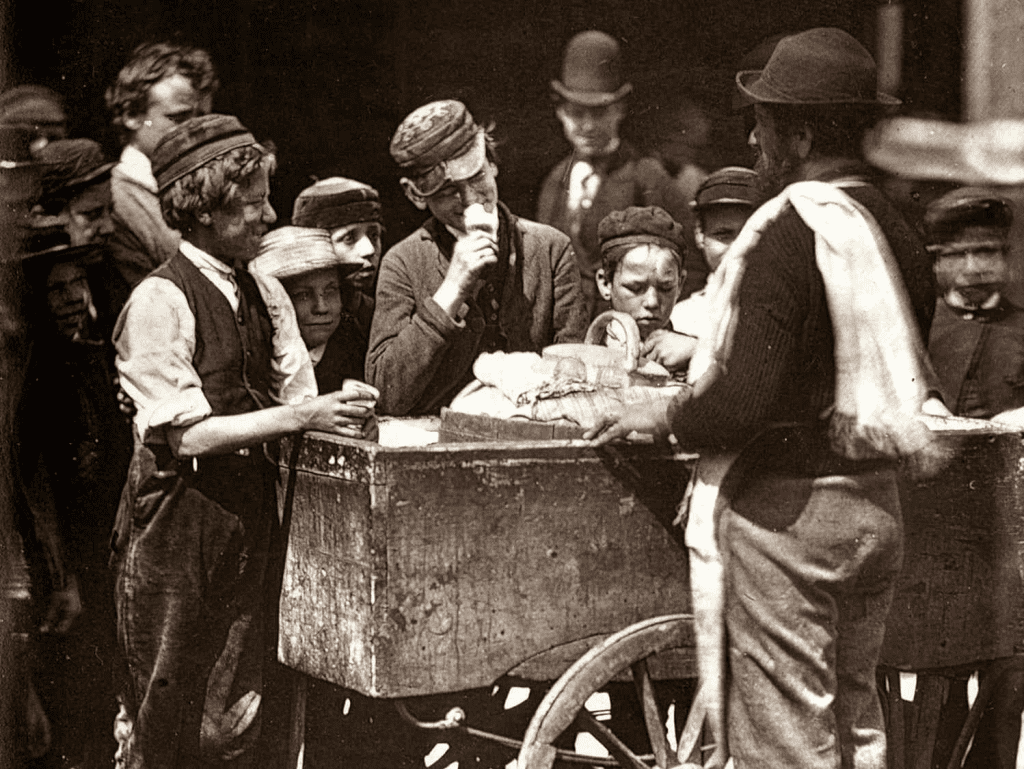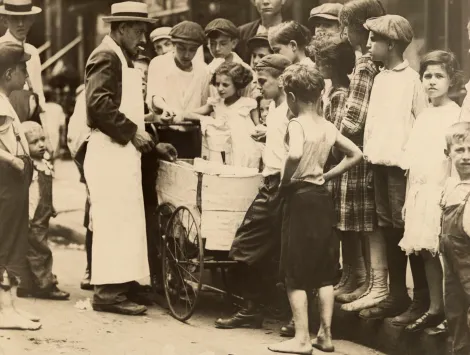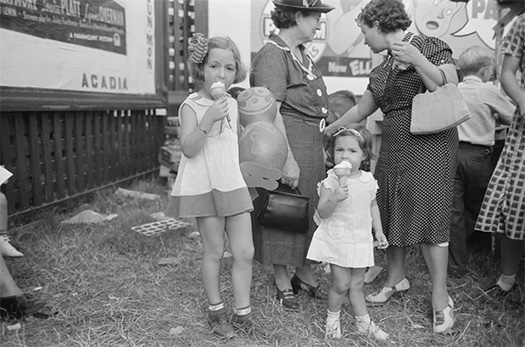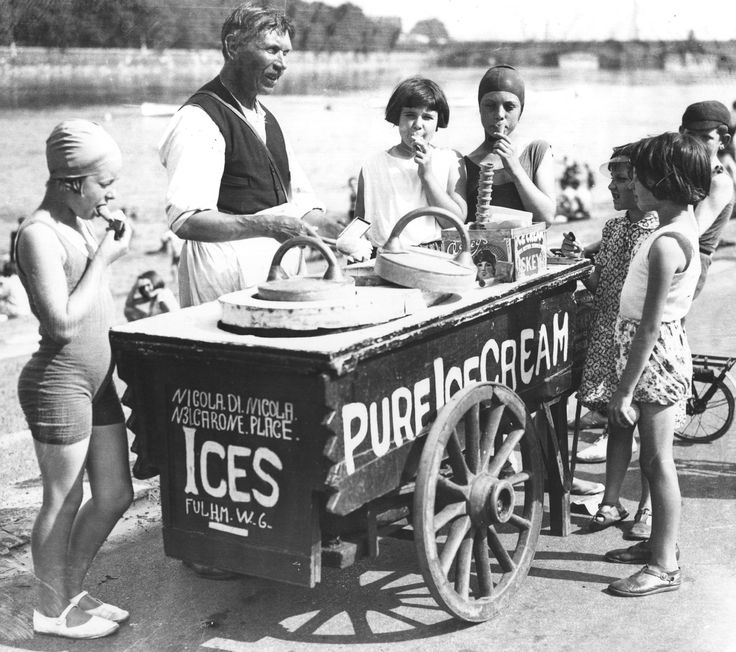In the heat of the 1904 St. Louis World’s Fair, one small invention forever changed how we enjoy ice cream. It wasn’t pre-planned, and it wasn’t the result of months of testing. Instead, it came from quick thinking and a little improvisation.
Ice cream was wildly popular among fairgoers, and the long lines at vendors’ stands proved it. However, one critical issue threatened to ruin the party: the vendors began running out of serving cups. At that moment, one man saw opportunity in crisis and dessert history was made.

Who Was Ernest Hamwi?
The man behind the idea was Ernest Hamwi, a Syrian immigrant selling a crisp, sweet pastry known as zalabia from a booth near one of the ice cream vendors. His pastries were thin and shaped like waffles, freshly made on a hot metal press.
When he noticed the neighboring ice cream vendor scrambling to serve customers without cups, Hamwi quickly rolled one of his waffles into a cone shape and offered it as a substitute. The vendor scooped ice cream into the rolled pastry and just like that, the ice cream cone was born.
It was convenient, fun, and edible. People loved it instantly.

The Crowd’s Reaction to the Edible Container
Fairgoers were delighted by the novelty. It wasn’t just about solving a supply problem. The cone added a delightful crunch and flavor to the frozen treat. For many, it was the perfect pairing creamy and cold meets warm and crispy. Customers no longer had to juggle sticky spoons and melting scoops. They could walk and enjoy their dessert with no waste, no mess, and a satisfying crunch at the end.
Video:
Inventions That Will Make Your Mouth Water: The Ice Cream Cone
The reaction was so positive that other vendors at the fair quickly adopted the idea. Waffle cones began popping up throughout the fairgrounds, and before long, they were being sold across the country.
A Debate Over Who Deserves the Credit
Though Hamwi is widely recognized for his contribution, the true origin of the ice cream cone has been debated for more than a century. Several vendors at the 1904 fair claimed to have come up with the idea independently. Among the names associated with the invention are Abe Doumar, David Avayou, and Charles Menches.
Still, it was Hamwi’s quick thinking and collaboration that helped spark the trend. Years later, he even founded the Cornucopia Waffle Company, further solidifying his connection to the invention.
Regardless of who was first, the St. Louis World’s Fair of 1904 remains the birthplace of the ice cream cone as we know it today.

How the Ice Cream Cone Became a Cultural Icon
After its success at the World’s Fair, the ice cream cone quickly found its way into American dessert culture. By the 1920s, mass production allowed cones to be made in large quantities, and ice cream parlors across the country began offering them as a standard option.
Video:
ICE CREAM CONES | How It’s Made
In time, cones evolved into different forms. There were cake cones, sugar cones, and waffle cones each offering a unique texture and taste. Some were dipped in chocolate, rolled in sprinkles, or filled with fudge at the bottom.
The cone became more than just a container; it became part of the dessert experience itself.

Legacy of a Happy Accident
What began as a quick fix turned into one of the most beloved food pairings in history. The ice cream cone is more than just a treat it’s a symbol of summer, childhood memories, and joyful simplicity. It’s served at fairs, beaches, parks, and corner ice cream trucks.
Thanks to a little improvisation by a pastry seller more than a century ago, generations of sweet tooths have been able to enjoy ice cream in a way that’s both practical and fun.
From the humblest street fair to the grandest celebrations, the ice cream cone continues to bring people smiles one crunchy bite at a time.


